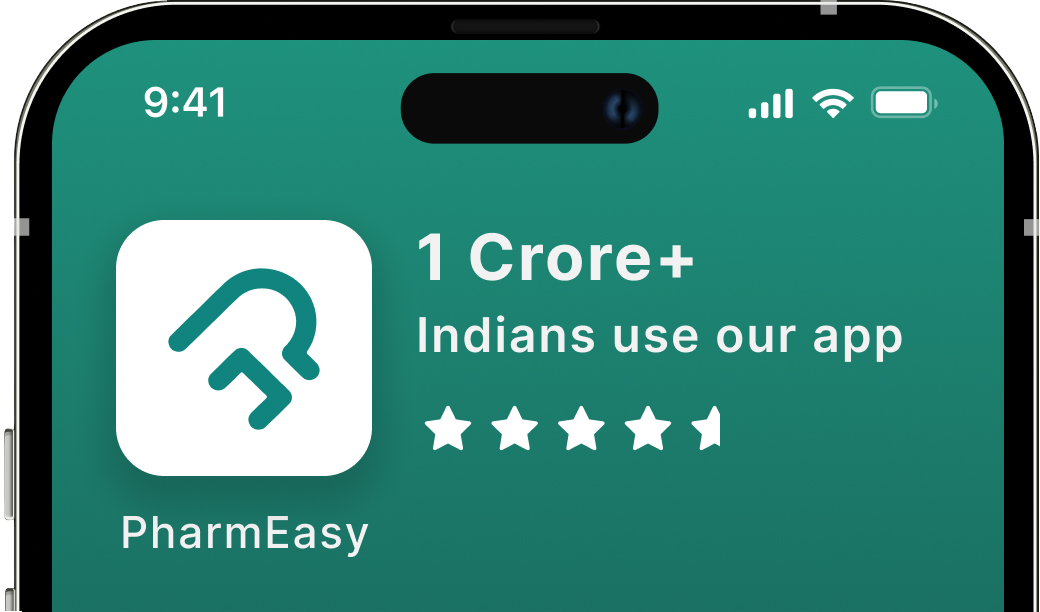Myths and Facts About Pregnancy
By Dr. Charmi Shah +2 more

Get,

to manage your symptom
Get your,


4 Cr+ families
benefitted

OTP sent to 9988776655



You’ve successfully subscribed to receive
doctor-approved tips on
Whatsapp

Get ready to feel your best.

Hi There,
Download the PharmEasy App now!!


Register to Avail the Offer
Send OTPBy continuing, you agree with our Privacy Policy and Terms and Conditions

Hi There,
Sign up on PharmEasy now!!
Trusted by 4 crore+ families

OTP sent to 9988776655



You have unlocked 25% off on medicines




Code: NU25
By Dr. Charmi Shah +2 more
Table of Contents
Myths about pregnancy are so common that they could almost be listed as a symptom, alongside growing belly. In this article, we will debunk common pregnancy myths, old wives’ tales, urban legends that have been passed down through generations. Most of these are harmless but can be stress-causing and a few are potentially dangerous.
Let’s separate fact from fiction when it comes to pregnancy:


Reality: Just because you’re pregnant, doesn’t mean you can’t have fun. While a few things are off the table, such as alcohol and raw fish, not everything has to be.
Moderation is a good rule of thumb for most things, including activity, food, and coffee. Also, anxiety about body image during pregnancy may lead to eating disorders. Therefore, prioritise safety, maintain balance, and attend regular medical consultations to support a healthy pregnancy.

Reality: Hereditary factors have no role to play in predicting how easy or difficult your pregnancy and delivery will be. On the contrary, the size and position of the baby and your diet and lifestyle play a role in determining pregnancy and delivery outcomes. However, it is important to note that genetic or hereditary factors may influence the risk of conditions like gestational diabetes, hypertension, or preterm labour5.

Reality: After mid-pregnancy (around 20 weeks), lying flat on your back can compress a major vein (the inferior vena cava), which may reduce blood flow to the placenta and cause dizziness or low blood pressure in the mother6. Accidentally rolling onto your back for a short time during sleep is not harmful, but side sleeping (especially on the left side) is recommended for better circulation and comfort7.

Reality: Although everyone’s sure you’re going to have a boy because you’re carrying low and a girl if it’s high, this popular belief just isn’t true. Facts suggest that the shape and height of your belly are determined by lots of things, including maternal height and weight, uterine tone (the strength, flexibility, and muscular structure of the uterus), and the baby’s position8.
In fact, carrying low may mean your baby has dropped lower into the pelvis to prepare for delivery.
The only reliable way to know your baby’s sex is through an ultrasound ordered by your doctor. If you’d rather keep it a surprise, you can simply wait until birth. In India, sex determination by ultrasound is strictly regulated under the PCPNDT Act and is not permitted for non-medical purposes9.
Also Read: 10 Best Intimate Tips For Women To Keep Them Healthy

Reality: Immersing in water during early labour can help with relaxation and pain relief. Delivering a baby underwater (water birth) can be safe in select cases with trained supervision, but it carries risks such as infection, umbilical cord complications, and aspiration risk for the baby10. It’s not universally recommended, so always discuss options with your doctor.
Enjoy your pregnancy and, when in doubt, always consult a doctor before self-medicating.
Also Read: Early Signs of Implantation: What to Expect Before You Miss Your Period
Many common pregnancy “rules” are based on myths rather than evidence. While some precautions are important, most everyday activities, like moderate caffeine intake and safe travel, are generally safe when done thoughtfully. Always follow advice as per national guidelines and your treating obstetrician.
Understanding pregnancy facts helps expectant parents make informed choices, reduces unnecessary anxiety, and supports a healthier, more confident pregnancy journey.
Also Read: PCOS Diet: How to Use Food to Help Manage Your PCOS
Disclaimer: The information provided here is for educational/awareness purposes only and is not intended to be a substitute for medical treatment by a healthcare professional and should not be relied upon to diagnose or treat any medical condition. The reader should consult a registered medical practitioner to determine the appropriateness of the information and before consuming any medication. PharmEasy does not provide any guarantee or warranty (express or implied) regarding the accuracy, adequacy, completeness, legality, reliability or usefulness of the information; and disclaims any liability arising thereof.
Links and product recommendations in the information provided here are advertisements of third-party products available on the website. PharmEasy does not make any representation on the accuracy or suitability of such products/services. Advertisements do not influence the editorial decisions or content. The information in this blog is subject to change without notice. The authors and administrators reserve the right to modify, add, or remove content without notification. It is your responsibility to review this disclaimer regularly for any changes.
Comments

Leave your comment...
You may also like
Comments